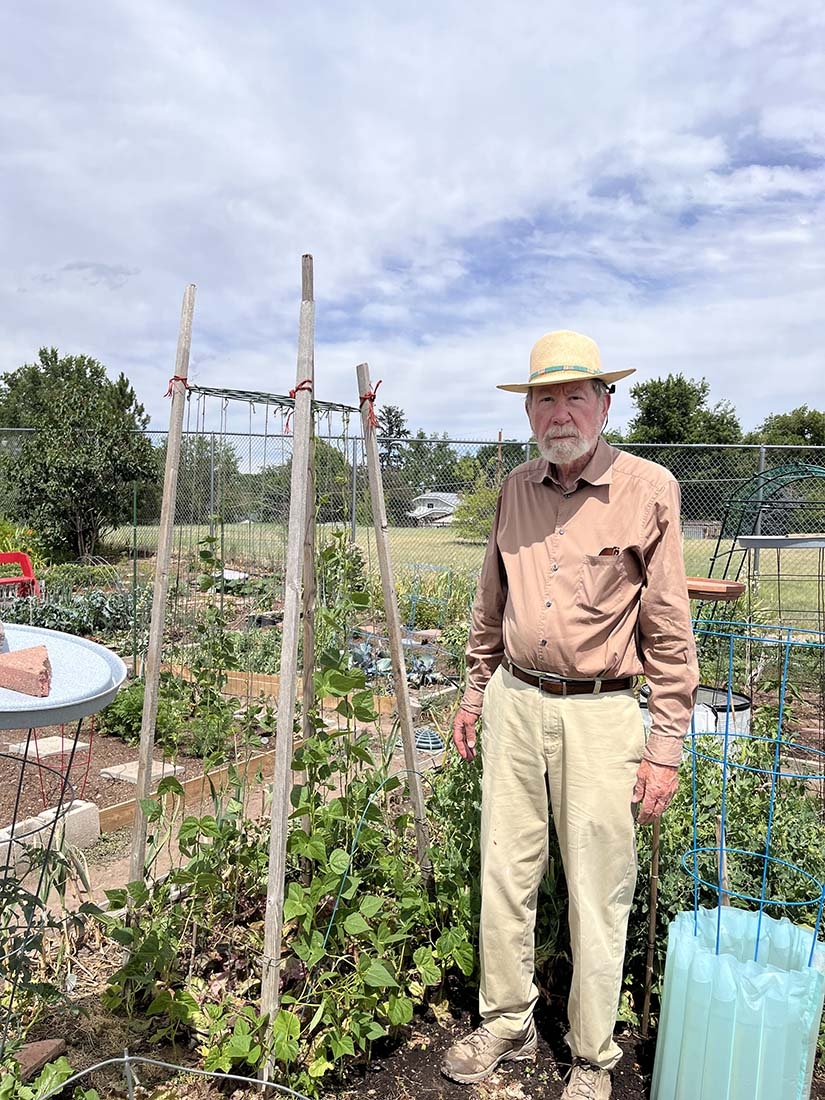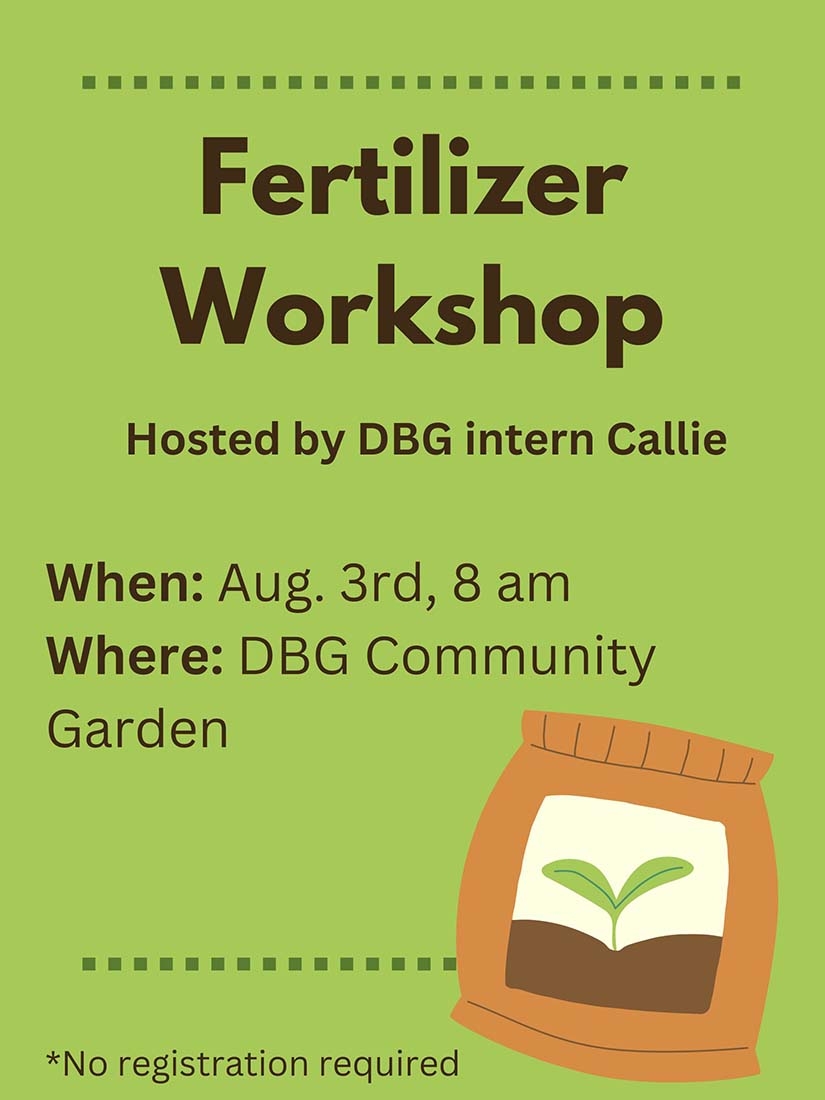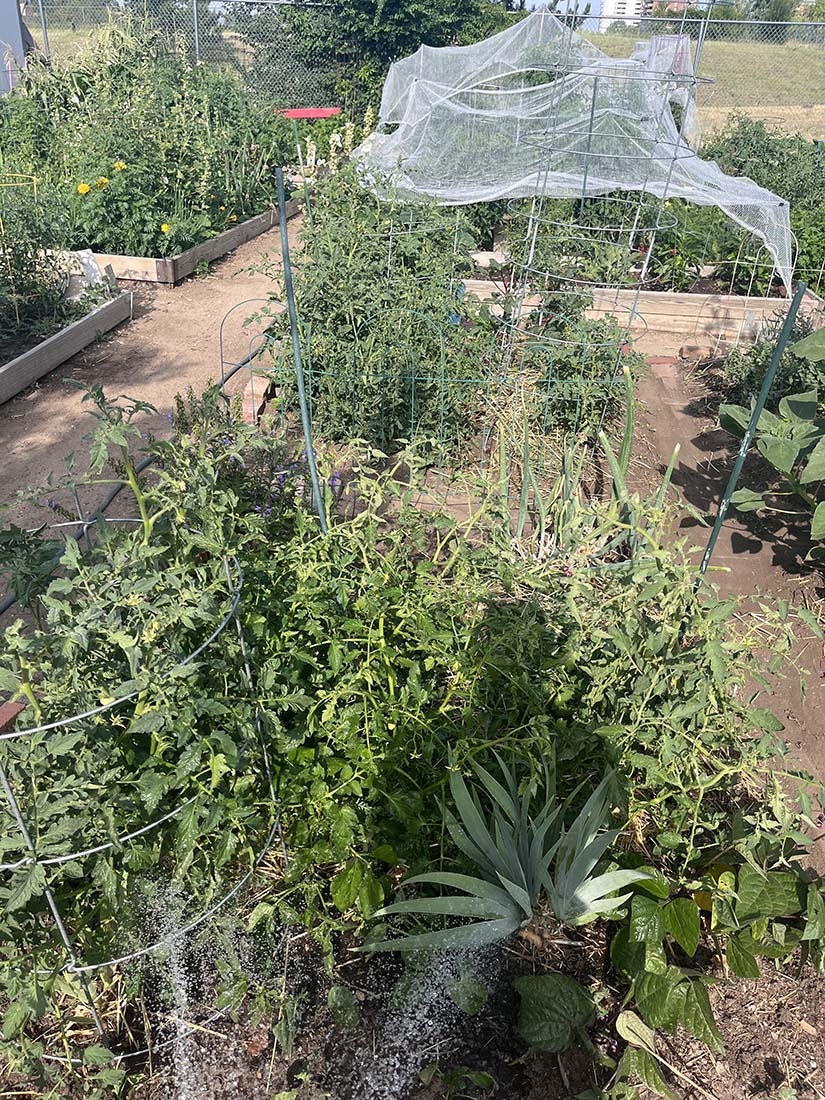Cultivating Crops and Curiosity at the Community Garden
In the foothills of Colorado where I live, growing a vegetable garden with the intent of eating any of the harvest for yourself would make you an optimist. That is unless you had installed a sturdy fence and a maze of booby traps to adequately deter the gluttonous elk, deer, voles, etc. That is why I was over the moon to receive a donation plot at Denver Botanic Gardens’ Community Garden as my internship project – far from any elk.
The donation plot came filled with some mint, raspberry, strawberries, walking onion, green onion and some perennial flowers; however, I was free to make it my own. The first things I planted were some transplants of okra, tomatoes and peppers. Then I perused my boss Julia’s seed collection for some other plants that piqued my interest. This is how I came about my first map design. Unfortunately, many of my initial seeds never took. I suspected that I had tried to plant too many cool season crops that would have preferred to start in the spring. However, with time, I realized that a bigger driver of the low germination was probably the soil runoff and erosion on the edges of the beds, which is where I was having the most difficulty.
Therefore, I switched to planting larger-seeded, warm-season crops like bush beans. This way they were less likely to get washed away or not germinate due to high soil temperatures. Another reason I liked planting bush beans was because I was receiving a lot of them for free from other gardeners, and according to Dan – one of the most veteran gardeners at the Community Garden – bush beans have a short maturation cycle. This was important for me to consider, since my internship was more than halfway finished at that point, and I wanted to see the fruits of my labor before leaving.
My other project was to create an educational workshop, which was held on August 3. After a survey with various options was sent to community gardeners, fertilizer was eventually chosen. I constructed a pamphlet of what I considered the most important info. It included information on the risks of application, ideal timing, how to make fertilizer at home, different types of fertilizer, types of application, the function of nutrients within the plant, the nitrogen cycle and a nutrient deficiency plant-matching game.
This article was contributed by Callie Kuykendall, who graduated from Washington State University in May with a major in sustainable agriculture and a minor in Spanish. After her Denver Botanic Gardens internship, she is serving as an International Agricultural Exchange Fellow with the Norman Borlaug Institute in Guatemala. Upon returning she hopes to find a job in agriculture in the Denver area.
Gallery





Add new comment